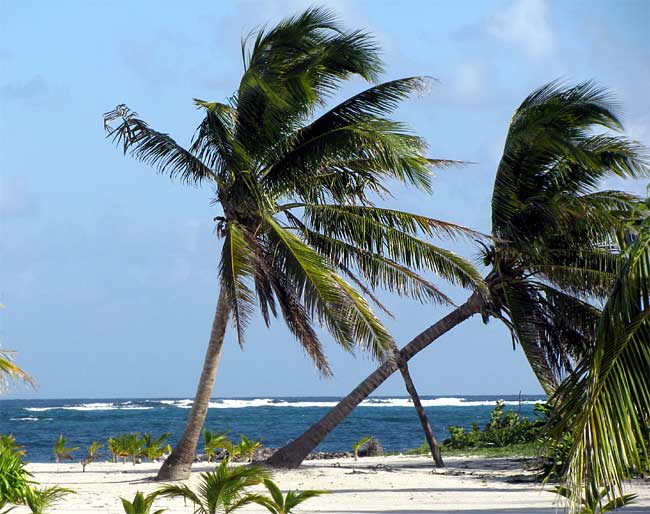Excerpts from Jim Conrad's
Naturalist Newsletter
from the December 22, 2008 Newsletter written at Mayan Beach Garden Resort 20 kms north of Mahahual; Caribbean coastal beach and mangroves, ~N18.89°, ~W87.64°, Quintana Roo state, MÉXICO
WHITE WATER OFFSHORE

Above you see the beach view for which people from all over the world come to the Costa Maya to see. Of interest to us right now is the line of white water about half a mile offshore. (It looks closer than that because I was using a small telephoto lens.)
At night when I'm sleeping on the beach I hear two distinct wave sounds. There's the close-up, washing, rhythmic thunder reaching a crescendo maybe every five seconds when waves break on the beach. Beneath that sound lies a continual roar like a big waterfall, created when waves form and collapse out where you see the white water in the picture.
That's where our coral reef is. Waves travel great distances across the Caribbean, then when they encounter the reef they break, creating the roaring white water.
To understand why waves break when they pass over shallow water offshore you have to go into wave physics. Basically, a wave is what you see plus an inverted-cone area of activity below the wave. That area of activity is like an underwater leg. When the "leg" hits the ocean floor or a reef it "trips," causing the wave to rise, rush forward, and collapse. The process is described and diagrammed more technically at the "How Stuff Works" website, on a page explaining to surfers why waves break, at http://adventure.howstuffworks.com/surfing6.htm.
Between the coral reef and the beach there's a broad lagoon about 15 feet deep, mostly densely vegetated with various species of seagrass, Turtle Grass, and similar aquatic plants.